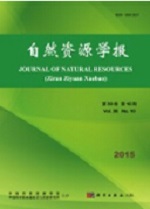
About one-third of land in the world is approximately the basic conditions of waste-land. Wasteland is very wide and has a pivotal position on earth. Meanwhile, it bears very important ecological functions. In recent years, Chinese government and academia paid much attention to the wasteland. Protection and development of wasteland had become an important research topic. Although China has had a lot of provisions on wasteland, and scholars have carried out relevant research on wasteland from different aspects, the definitions and classifi-cations of wasteland are not unified. This hinders the protection and development of wasteland to a certain extent. Firstly, this paper reviews existing definitions of wasteland and clarifies the relationship between wasteland and other related concepts, and then redefines the concept of wasteland: generally wasteland refers to unutilized, idle or abandoned land except for agricultural land and construction land. In the narrow sense wasteland refers only barren state of land, but with appropriate use it could be suitable for agriculture, forest, herd and energy corps. Secondly, this paper systematically analyzes the classification of wastelands in the United States and India, and on the basis of existing land classification system in China, it proposes to add the category of “ecological land”, which plays the main ecological functions, provides ecological services and ecological products of woodland, grassland, wasteland, water and beaches directly or indirectly. At the same time it proposes to divide wasteland into three types: wilderness, unused and abandoned land. Thirdly, this article first recognizes that waste-land has various ecological functions, such as sand-fixation, soil conservation, carbon sequestra-tion and oxygen release, water conservation, biodiversity conservation, etc., which has impor-tant implications for the development and protection of the ecological land and wasteland. Finally, this paper proposes four suggestions on the development and protection of wasteland in China in the future: pay attention to the value of wasteland, establish the property right system of wasteland, prepare the natural resources balance sheet, protect and develop wasteland by categories.